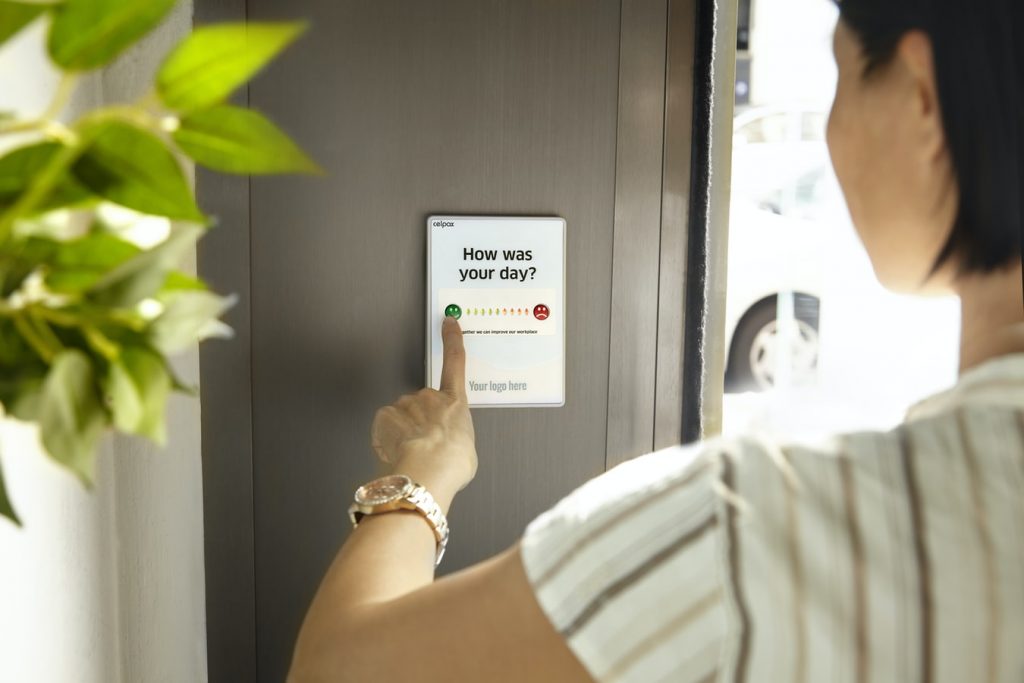In reality there is no area of business or private life which has not been impacted to some extent by “big data”. The term big data refers to the collection of huge amounts of data which is then analysed and used to predict future trends. This makes the process sound relatively simple but it has had a revolutionary impact on the hospitality industry.
In reality big data is a fluid and fast-moving area of analytics which is attracting huge investment from large corporations. For example, back in 2014 Starwood hotels invested $50 million in a revenue optimising system which increased revenue per room by 5% in just 12 months. The fact the business then merged with Marriott International in 2016 is not a coincidence. Squeezing every last drop of revenue out of hotel rooms not only increases revenue and profitability but can significantly enhance the customer experience, if managed correctly.
We will now take a look at some of the areas in which big data is having an impact on the hospitality industry
Revenue management
The majority of costs associated with hospitality are fixed, including the likes of:-
•Staff costs
•Maintenance costs
•Building costs
•Business rates
•Finance costs
•Service costs
So, if you take the combined cost of running a hotel over the course of 12 months and divide this by the number of rooms, you will see how much it costs to maintain each room for 12 months. You can then work out the monthly, weekly and daily revenue required to cover the cost of a room – and then make a profit. If we look at the 2019 report for Marriott Hotels (simplifying the figures a little) we know that:-
•Operating costs were $19 billion
•Gross revenue was $21 billion
•There were 1.4 million rooms
Therefore:-
•Cost per room was $13,500 per year (operating cost/number of rooms
There are obviously other factors to take into consideration but this gives you a broad understanding of the cost per room/revenue required to start making a profit. So, on the above figures we can calculate that Marriott Hotels created a gross profit of $1500 per room during 2019. We can drill down even further into the cost per room figure:-
•$1125 per month
•$37 per day
Using big data we can predict with an unerring degree of accuracy various booking trends throughout the year taking into account the weather, school holidays, price of competitors, local events, local supply of hotel rooms and many other different factors. The idea is simple, maximise the revenue per room during busy periods using historic and future predicted trends to calculate the tipping price between maximum occupancy and overpricing.
Dynamic pricing
Dynamic pricing is the use of algorithms to predict future trends in demand for, in this example, hotel rooms. This allows hotel companies to adjust the price they charge customers per night to achieve the highest occupancy rate/revenue per room. In reality it is very rare to achieve 100% occupancy rates but this may be achievable at certain times of the year such as Christmas, or if a popular concert or soccer game is being held nearby.
Using dynamic pricing it is possible to calculate what is known as the yield management figure which can be very useful. For example:-
Let us assume you have a hotel with 100 rooms and a standard rate of $350 per room per night. Therefore in theory the maximum revenue will be $35,000 per night with a 100% occupancy rate. If we assume that one evening only 50 rooms were occupied at a daily rate of $250 (revenue of $12,500) the yield management figure is as follows:-
•Revenue achieved/maximum potential revenue = yield management figure
•$12,500/$35,000 = 35.7%
If we look at a different scenario, let us assume there was a very popular music concert nearby and a lack of hotel rooms in the area. The dynamic pricing algorithm would kick in and it may predict that people will be willing to pay $500 per room per night (revenue of $50,000). If we assume 100% occupancy then the yield management figure is very different:-
•$50,000/$35,000 = 142.8%
This perfectly illustrates the power of dynamic pricing which will also allow hotels to minimise losses during quiet periods. The key is to find the tipping point of the maximum dynamic cost per room that people will pay which will deliver the highest occupancy rate possible.
Targeted marketing
To many people a hotel is just a hotel but in reality each individual hotel will have a target market and a particular demographic of clientele. Using big data services it is possible to focus on a particular market with laser type precision. While marketing expenditure is a must for any business it is very important that the individuals you are targeting are the ones who see your advertising. For example, if a particular hotel was popular amongst families then there would be no point in creating marketing content targeting those looking for business accommodation.
We also know from historic trends, feedback and opinions that for example those looking to book a summer break may start to think about booking their holiday in the cold winter nights. This is the moment when they long to escape the extremes of the winter weather and look forward to their summer holidays. So, if you’re marketing content can be placed before them during these cold winter evenings then they are probably at their most susceptible to an impulse purchase.
The advertising channels used to push marketing literature have for some time been dominated by social media. The likes of Facebook allow you to use the demographic information of your clientele to ensure that your marketing adverts are placed in front of the right people at the right time. The opportunity to focus each dollar of marketing spend at a particular demographic has huge long-term benefits.
Customer feedback
If we look back to the example of Marriott Hotels and the 1.4 million worldwide rooms the group has available, we can only imagine the huge amount of customer feedback received on a regular basis. Using big data analysis it is very easy to review huge amounts of data to find trends, expectations and similarities amongst customer comments. Let us assume for example that feedback from a particular hotel chain showed that the restaurant opening hours were too focused and should be expanded. It may be that the restaurant opens at 7 PM but some customers are looking to order food and drink from 6 PM onwards. As a consequence, they may decide to go to a nearby restaurant and spend their money out with the hotel.
Using data analysis and algorithms this particular trend could be identified when looking through the huge raft of customer feedback. As a consequence, the hotel decides to open the restaurant from 6 PM onwards thereby prompting more customers to eat at the hotel and perhaps enjoy a few drinks in the bar afterwards. This is additional income which had been going elsewhere simply because the restaurant opening hours were not as accommodating as they could have been. This is a very basic example but it shows how a relatively minor tweak of the restaurant opening hours could lead to a significant increase in revenues across a large hotel chain.
Monitoring competitors
The Internet has opened up a whole new world for data collection and data analysis. It is now possible to create software which will scour the Internet looking for feedback on your competitors. Then algorithms are used to pinpoint keywords and key phrases and bring these together to identify new trends potentially identifying reasons why one hotel chain may be doing better than another in particular areas.
If we continue the theme of restaurant services, it may be that a competing hotel down the road has received significant praise for its restaurant menu. This type of information could help another hotel realign their menu and perhaps be more competitive on pricing to take advantage of what they know to be a winning formula. The monitoring of competitors will also allow other hotels to benefit from the shortcomings of their rivals. For example, if the equipment in a particular hotel gym was outdated and not keeping up with recent trends, rivals could benefit enormously from this by improving/promoting their facilities. It may even prove lucrative to focus a particular marketing campaign highlighting their high quality gym facilities and the latest equipment.
Additional services
Big data relating to industry trends can prove extremely lucrative for those hotel chains more flexible and willing to adapt with the times. For example, there may be a particular fitness trend which is sweeping the industry. As a consequence, those hotels able to provide this particular type of fitness class and/or fitness equipment will inevitably attract new clients. This is just one example where the constant analysis and breakdown of industry trends, company feedback and changing demographics can create invaluable additional revenues and more food for cash hungry marketing campaigns.
Summary
It is very difficult to cover the potential of big data in one article and the impact this is and will continue to have on the hospitality industry. This can be a very fickle industry with quick changing trends, dynamic pricing and the need to maximise income while demand is high and minimising losses during quieter periods. As we touched on above, the introduction of additional services, tweaking of existing services and focused marketing will allow those in the hospitality industry to squeeze every last dollar out of their marketing spend and increase revenues.
The fact that Starwood hotels invested $50 million in big data back in 2014, just prior to the 2016 merger with Marriott Hotels, was no coincidence and says everything about the benefits of big data.
Link Summary:-
https://hoteltechreport.com/news/yield-management
http://media.corporate-ir.net/media_files/IROL/10/108017/marriottAR19/index.html

Founder Dinis Guarda
IntelligentHQ Your New Business Network.
IntelligentHQ is a Business network and an expert source for finance, capital markets and intelligence for thousands of global business professionals, startups, and companies.
We exist at the point of intersection between technology, social media, finance and innovation.
IntelligentHQ leverages innovation and scale of social digital technology, analytics, news, and distribution to create an unparalleled, full digital medium and social business networks spectrum.
IntelligentHQ is working hard, to become a trusted, and indispensable source of business news and analytics, within financial services and its associated supply chains and ecosystems














